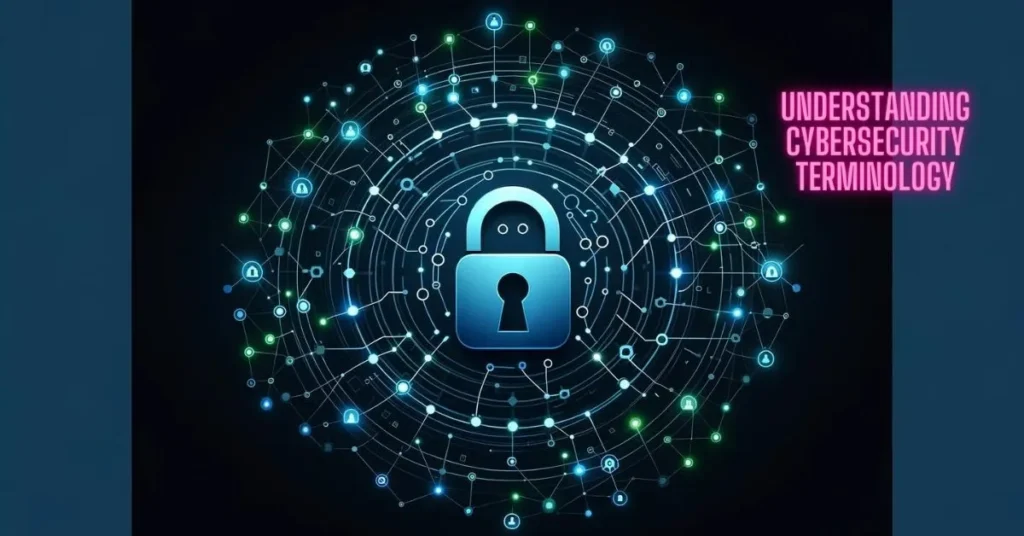Contents
- The Importance of Cybersecurity Awareness
- Key Cybersecurity Terms You Should Know
- How Cyber Threats Evolve and the Language They Speak
- Breaking Down Cryptic Acronyms: SSL, HTTPS, and VPN Explained
- The Human Element: Social Engineering Terms Unveiled
- Safe Surfing: Terms Related to Internet and Data Protection
- Data Breaches and Their Terminology
- Navigating Compliance Regulations: Understanding GDPR, CCPA, and More
- Building a Secure Future: Learning from Cybersecurity Incidents
The Importance of Cybersecurity Awareness
In a world where countless personal and financial transactions transfer across the Internet, cybersecurity is no longer an option but a necessity. Individuals and businesses are targets for cybercriminals, and knowledge of cybersecurity terminology can be the first defense line in identifying and understanding potential threats. In this interconnected landscape, a vulnerability in one area can lead to a cascade of breaches, with consequences ranging from identity theft to severe financial losses. By making cybersecurity awareness commonplace, we protect individual assets and contribute to the safety and reliability of digital infrastructure globally.
Key Cybersecurity Terms You Should Know
Encountering terms like ‘phishing,’ which describes the technique used to lure individuals into providing sensitive data, or ‘malware,’ a broad classification for harmful software intended to disrupt, steal, or damage data, is becoming increasingly common. But these terms can often seem esoteric to those not steeped in the digital world. However, understanding these terms is beneficial and essential as cyber threats become more widespread. It empowers Internet users to identify suspicious activities quickly, understand the risks involved, and take appropriate action to mitigate potential damage.
How Cyber Threats Evolve and the Language They Speak
Cyber threats are like flu viruses—constantly mutating to bypass the latest defenses. Ransomware, for example, takes personal data hostage and demands payment for its release. At the same time, spyware covertly infiltrates systems to siphon information without the user’s knowledge. As these security risks develop, the vocabulary used to explain and combat them grows. Being conversant with the latest terms not only equips users to understand news reports and expert advice better but also encourages proactive measures to secure their personal and professional data against these evolving digital dangers.
Breaking Down Cryptic Acronyms: SSL, HTTPS, and VPN Explained
Now, let’s untangle a few acronyms that often pop up in the context of cybersecurity. For instance, SSL (Secure Sockets Layer) is a security protocol that creates an encrypted link between a web server and a browser, ensuring that all data passed between them remains private. HTTPS (Hypertext Transfer Protocol Secure) signals that an SSL is safeguarding the connection to the site you’re visiting, indicating a level of trustworthiness. Lastly, a VPN (Virtual Private Network) extends a private network across a public one, allowing users to send and receive data as if their devices were directly connected to the private network. A VPN can enhance security, especially when using public Wi-Fi networks, as it cloaks the user’s IP address and encrypts data transfers.
The Human Element: Social Engineering Terms Unveiled
Ahead of the technical intricacies of cybersecurity lies the human factor — the art of manipulating individuals to breach security. ‘Pretexting’ involves fabricating scenarios to obtain sensitive information, while ‘baiting’ uses false promises to pique the victim’s interest, leading to the exploit. Meanwhile, ‘tailgating’ describes an unauthorized person following an authorized one into a restricted area. Recognizing these terms is not just about expanding one’s tech vocabulary; it’s about developing keen situational awareness to guard against these socially engineered traps.
Safe Surfing: Terms Related to Internet and Data Protection
Internet safety revolves around understanding and employing specific tools and practices. ‘Firewalls’ act as barriers that prevent unauthorized access to private networks, while ‘antivirus’ software scans and removes potentially compromised files before they inflict harm. Knowledge of these terms, alongside practical cybersecurity hygiene such as frequent password updates and cautiousness with email attachments, are rudimentary yet critical components of a comprehensive cyber defense strategy. Smart Internet users will hone their understanding of these concepts to navigate the web’s vast waters safely.
Data Breaches and Their Terminology
Understanding the language of data breaches is essential in a world where personal and corporate information is frequently targeted. ‘Exploits’ are attacks on system vulnerabilities, often unknown to the user until after the breach. ‘Zero-day’ refers to a security vulnerability that is exploited before developers have a chance to address it. Familiarity with these terms and ‘incident response’ (the approach taken following a security breach) can greatly influence one’s ability to react effectively when news of a data leak surfaces.
Cybersecurity’s impact reaches beyond individual safety into the realm of legal compliance. Terms stemming from regulations like the GDPR (General Data Protection Regulation) enforce data privacy by mandating how personal information should be handled across Europe, while the CCPA (California Consumer Privacy Act) grants similar rights to California residents. With the comprehension of these acronyms and their implications, entities can avoid non-compliance penalties, and individuals may fully realize their rights to control personal data. Grasping the language of these regulations empowers all parties to engage more confidently with digital platforms that collect and process personal information.
Building a Secure Future: Learning from Cybersecurity Incidents
Each cybersecurity incident presents a lesson to be learned and a chance to tighten defenses for the future. By dissecting past events and comprehending the terminology employed during these crises, organizations and individuals gain the foresight to thwart or mitigate similar attacks. Informed by the cautionary tales of previous security lapses, such as those reported by industry experts and media, users can enhance their defenses and contribute to a foundational culture of cybersecurity. The road to a secure digital future is paved with understanding, vigilance, and the collective will to adapt and overcome.

